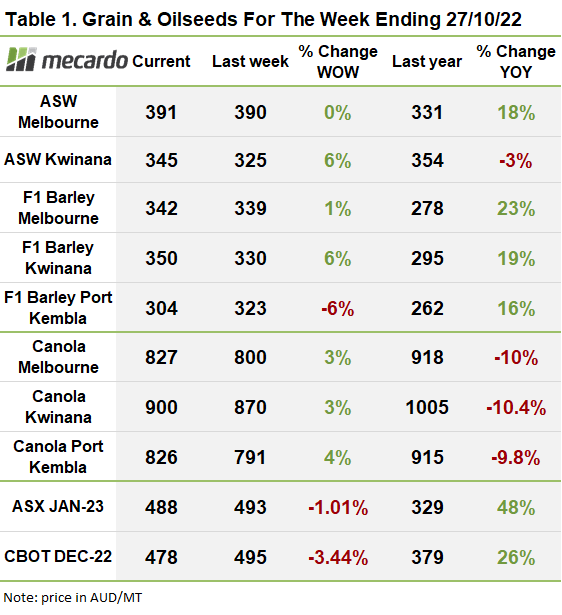It seems the wheat market is getting tired of the same old news coming out of the Black Sea. This week, stories started to circulate that one of the combatants was planning to use a ‘dirty bomb’. Regardless of whether it is an empty threat or something far more alarming, the market barely raised an eyebrow. The risk of a nuclear escalation is quite frankly unfathomable - and yet here we are. Maybe the market can’t speculate on something that has unthinkable repercussions.
For now the grain corridor remains open. Nearly 9mmt of Ukrainian grains has been sold since the initiatives inception. Talks are on-going between Ukraine, Turkey, the UN and Russia ahead of the Nov 19 deadline. Moscow has stipulated its demands insisting that ‘roadblocks’ in the form of sanctions are lifted that are making the export of certain food and fertiliser products more difficult than they should be. With luck, the threat of a nuclear escalation is simply raising the stakes at the negotiating table to make sure the Kremlin gets what it wants.
The Southern Hemisphere crop is rapidly becoming a talking point. Firstly news that drought and more recently frosts, have trimmed Argentina’s wheat crop from a forecast 19mmt to more recently 13.7mmt. For reference, last year they produced 23mmt. Wheat milling groups are seeking Government intervention on exports to ensure that milling supplies are maintained and food inflation kept under control.
The weather in Australia is also starting to gain traction in global markets. Australian wheat forecast of 30mmt is the third above average crop in a row, but a combination of La Niña and a negative IOD is peaking at the wrong time to potentially spoil the party. The sodden East Coast is raising concerns of yield loss on a broad scale but also quality concerns. It has long been thought that this years Australian crop would be lower protein than usual after three big years and expensive fertiliser has limited the amount of crop available nitrogen. The potential lack of protein could throw demand back to the US or Russia for high quality milling wheat.
At a local level, prompt demand into feedlots is picking up pace. Flooding in northern NSW is impacting the ability to bring in more feed due to road damage or impassable by floodwaters. It is creating quite the conundrum as buyers can’t get the feed but they can’t move the stock either. It is thought that some lots only have 10 days’ worth of feed stock remaining. A late start to the season, coupled with a very wet, soft finish means that new season grains will not be available for some weeks after the traditional start to harvest. Old crop grain in Qld and SA is fetching a premium as lot feeders cast their nets further afield to try and secure available supplies.
The week ahead….
The wheat market is still struggling with supply concerns versus an uncertain economic outlook. As a result, the market lacks any real conviction and is moving in a relatively tight band. The outcome of the grain corridor negotiations, whether positive or otherwise, could be a catalyst for a sizeable move.
Have any questions or comments?
Click on graph to expand
Data sources: Grain Central, CRM Agri, Dartboard Commodities


